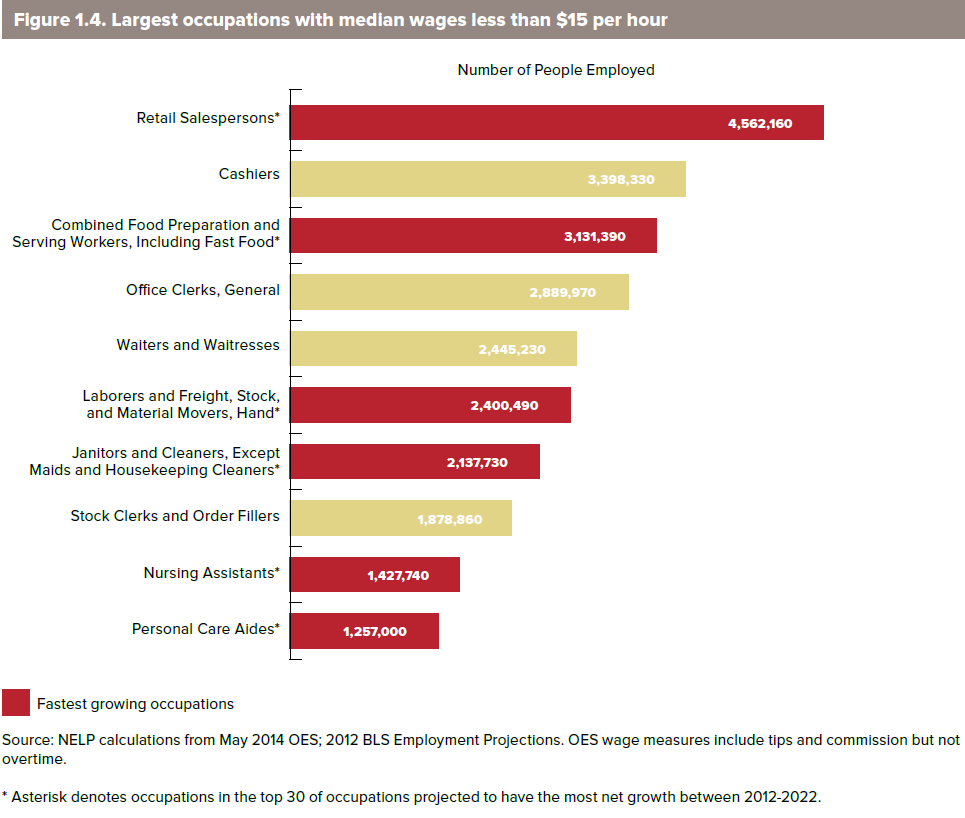Fastest Growing Jobs Are Low Paying Occupations
By:
Here is some bad news about the future American workforce. The fastest growing industries in America primarily employ low-wage workers, according to the National Employment Law Project (NELP). That's because six out of the 10 fastest growing occupations provide a median wage of less than $15 an hour. Specifically, the report says we should expect added low-wage jobs in retail sales, full-service restaurants, fast food stores, janitorial work, freight moving companies, and nursing.
“These are jobs that aren’t going anywhere,” Irene Tung, one of the report’s co-authors, told The Huffington Post. “You can’t outsource fast food in China. You have to grapple with that. This is where we have to lift wages if we want to begin to rebuild the disappearing middle class in the country.”
The effects of low wage work will be felt by all Americans, not just people working these jobs. Currently, U.S. taxpayers are subsidizing companies that pay poverty wages through social safety net programs, which step in to make up for low pay. According to NELP, the government paid $7 billion for food, medical care, and shelter for low-wage workers.
 National Employment Law Project - nelp.org
National Employment Law Project - nelp.org
Raising wages will not hurt the economy.
The NELP report also looked at businesses and cities that have implemented a $15-wage floor. The report consolidated research from UCLA, UC Berkeley, and prominent economists to determine that a $15 minimum wage has not lead to job loss. In fact, businesses actually saved money by having less employee turn-over. Prices have gone up in some areas, but the increase has been slight.
Public opinion is shifting in favor of a $15 minimum wage. A January 2015 poll by Hart Research Associates, commissioned by NELP, found that nearly two in three voters (63 percent) support raising the federal minimum wage to $15 per hour by 2020, including a solid majority of Independents (61 percent) and two in five Republicans (40 percent).
This comes after activists have not only raised awareness of the plight of low-wage workers, but have also educated the public about some of the misconceptions about low-wage work. Some may have opposed the "Fight for $15" due to the perception that low-wage workers are only in the fast food industry, are mostly teenagers, or don't work full-time jobs. In fact, as NELP reported, 46 percent of workers who make less than $15 an hour are over 35 years old. Further, according to the Department of Labor, more than half of minimum wage workers work full-time. They also contribute 46 percent of their household’s income.
For more on the Fight for 15, check out this video:
Want to make a difference? Sign our petition to raise the minimum wage:
